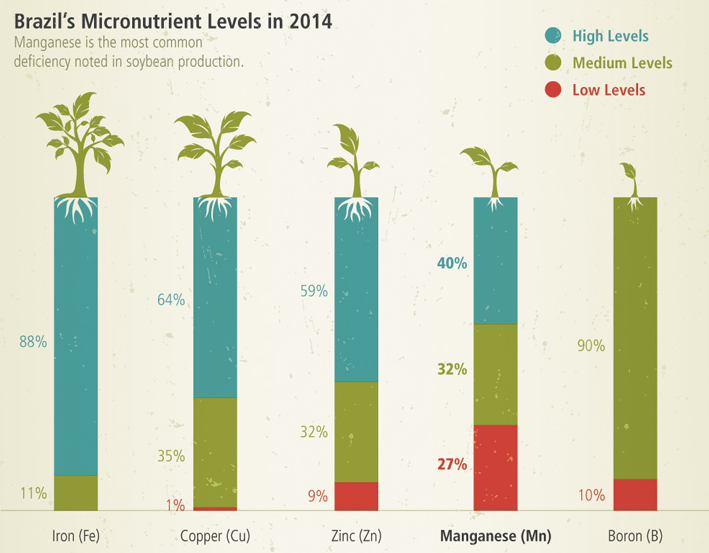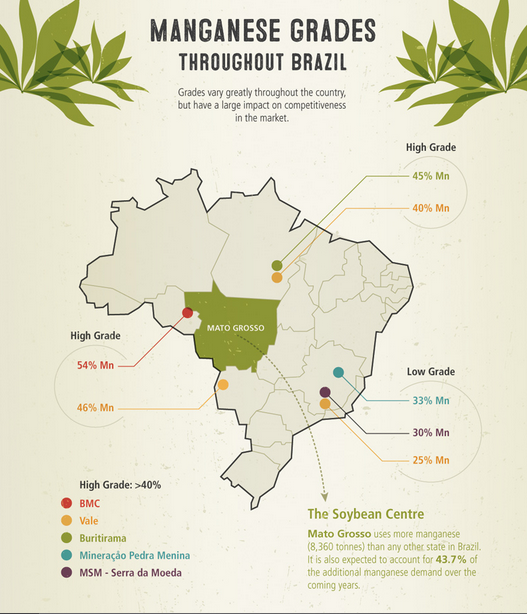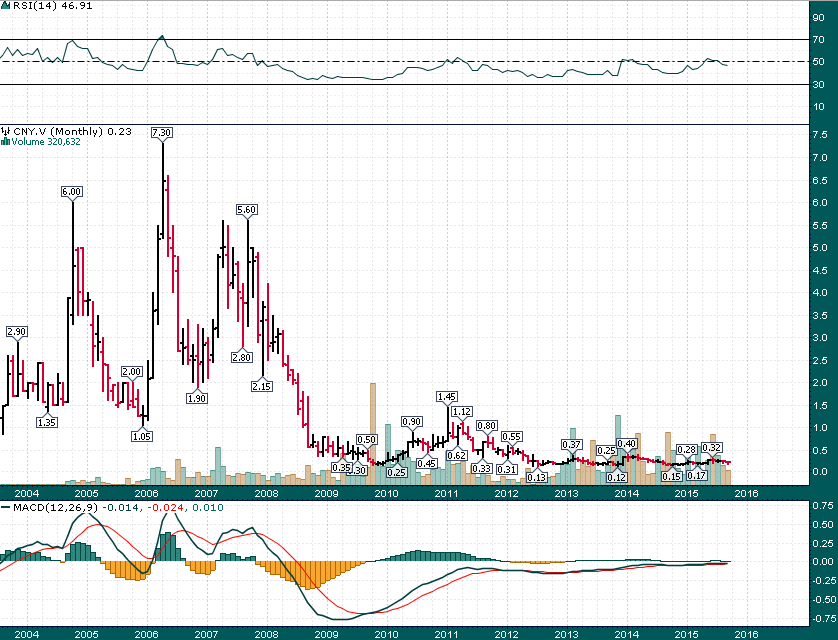Deep in the heart of Brazil's agricultural region a company called Cancana is committed to exploring for, and finding large scale high purity, high-grade manganese. Brazil is the world's #1 net agricultural supplier and high-grade, high purity manganese is a critical component of the fertilizer required to maximize soybean crop yields. Cancana's BMC project in the Rondônia region of Brazil is poised to become the primary supplier of manganese to the fertilizer industry in Brazil.
Manganese is typically associated with the steel industry, however, high-grade manganese is in high demand as a key fertilizer input and thus goes for a 30-40% premium. In most soils manganese is sufficient to supply crop needs, however, in Brazil there is a manganese deficiency in much of the soil used to grow soybeans (Brazil is the #1 global exporter of soybeans):

Brazil produces 30% of the world’s soybeans and is also the crop’s #1 exporter with 41% of all shipments. Growth in soybean production is not stopping, and it continues to expand by 14.1% per year in Amazonian states, covering over eight million hectares.
Brazil's soybean center, the Mato Grosso region, has large swaths of manganese deficient soil. Mato Grosso also happens to be right next door to Cancana's BMC project:
Cancana/BMC is committed to maximizing the opportunity to be the largest domestic supplier of high-grade manganese to Brazil's agricultural industry. Cancana has accelerated its smaller scale manganese production in recent months and the BMC project is on track to produce 40,000 tonnes of high-grade manganese in 2016. This smaller scale production is financing exploration of the resource (diamond drill results should be released within a few weeks along airborne geophysical surveys) with the goal of outlining and creating a scalable project with a double-digit mine life. Cancana expects exploration to be fully funded by operations by the end of next year.
Manganese was first explored for in the Rondonia region by Rio Madeira Mineracao in 2005. While others in the area were prospecting for diamonds and doing bulk sample tests on kimberlites, Rio Madeira recognized an opportunity and created a niche market for high grade, high value manganese cobbles. The cobble fields were known from road cuts and discussions with local farmers. The black cobbles were visible in roadbeds, especially after a rain. Minimal exploration uncovered several occurrences of these “boulder patches”. Three partners underwrote the exploration and capital investments needed to build a processing plant, which became operable during 2008.
BMC now operates two processing plants which both recently underwent safety upgrades which brought them in-line with modern safety standards. The role of the plants are two fold; remove the less than 5mm sized material including the soil, and separate the manganese bearing clasts from the gangue material (granitoids, mafic rocks and vein quartz) thus concentrating the manganese cobbles as the final product. This is accomplished by preliminary washing to remove the fines then a series of vibrating screens and jigs to sort the final product into three size fractions. Coarse material is greater than 25mm, medium sized material is 15 to 24mm in size while the fine material is 5mm to 14mm in size. The less than 5mm material is being stored for further processing. Currently studies are being conducted to understand the applicability of using cyclones, and the quantity and quality of the very fine material.
Through its investment in the BMC project, Cancana is on its way to being a niche agricultural supplier to the world's bread-basket. Primarily due to macro concerns relating to Brazil and the agriculture sector, the market has yet to fully appreciate Cancana's tremendous potential. The goal is to build out a full scale high-grade manganese mine producing between 500,000 and 1,000,000 tonnes of manganese annually. At the current market price of roughly $200/tonne (down 50% since 2011) it's not hard to see that the current $20 million market capitalization has plenty of room to expand to the upside. Patient investors could be rewarded handsomely.
Cancana Monthly (CNY.V)
Cancana shares (CNY.V) have been dormant for the past few years. During this time the chart has formed a broad base - A breakout above .40 on heavy volume would be the first sign that this extended basing phase is transitioning into a nascent uptrend.
For more info visit www.cancanacorp.com

























